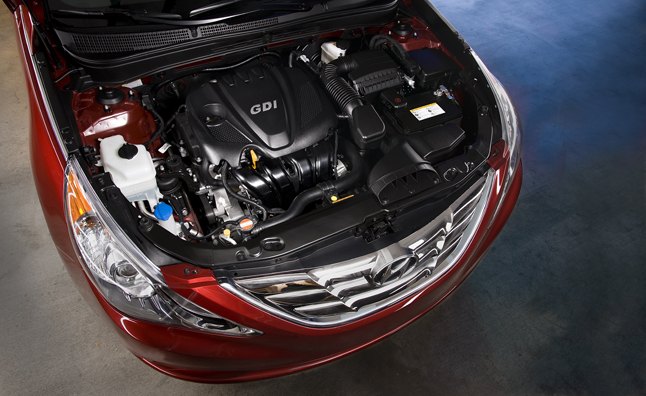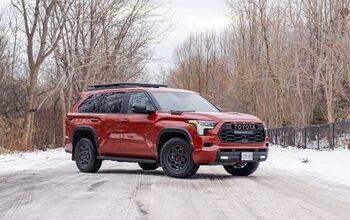2013: The Last Year of the V6 Engine?

With the V8 engine is losing its foothold, it seems like the V6 engine may suffer the same fate.
Don’t act too surprised, this move has been hinted at since 2010, when the newly designed Hyundai Sonata and Kia Optima went on sale.
“Those cars really showed that a turbo 4-cylinder can put out power,” says Devin Lindsay, powertrain analyst at IHS.
But Kia and Hyundai had what the drivers wanted with little compromise. The Optima and Sonata jumped to the top of the totem-pole in terms of fuel-economy and power. The upgrade in power comes from the addition of direct injection and turbocharging, which optimizes an engine’s use of fuel. Combine that new technology with the lower weight of the Optima and Sonata (possible because the chassis doesn’t need to hold a heavier V6), and the fuel advantages of four-cylinders became a success over the power of a V6.
“It’s a good combination: vehicles are getting lighter, so they don’t need the V6 anymore to give you that performance feel,” says Lindsay
SEDANS SAYING “SAYONARA” TO SIX CYLINDERS
With Hyundai and Kia leading the trend, new vehicles in the mid-sized sedan market are leaving the V6 at home, reserving them for performance vehicles and big SUVs. The 2013 Ford Fusion, 2013 Chevrolet Malibu and 2014 Mazda 6 are all vehicles that had V6 options in the past, which are no-longer available.
Just like how V8s are being phased out, V6s are being saved for unique cases. “We’re seeing a continuation of the same story,” Lindsay admits. Similar to how V8s were saved for high-performance machines and super-smooth luxury cars, V6s are only being used in bigger cars and trucks, like full-size sedans, seven-passenger crossovers and SUVs.
For those who want more power, turbochargers are providing the extra kick of acceleration in the Fusion and Malibu, without greatly affecting fuel economy numbers. Mazda is also offering a high-revving diesel option for those looking for more torque. Want the extra power and fuel economy? Hybrid options are available from Kia, Hyundai, Ford and Chevy. All without a fuel-hungry V6.
SMALL DISPLACEMENT CROSSOVERS TRENDING
The midsize-sedan isn’t the only vehicle breaking up with the V6. Compact and mid-sized crossovers are axing V6 options en masse. The Honda CR-V has managed to stay successful for over 10 years without having a V6 model, and just now the competition is taking notice. For 2013 the Mazda CX-5, Hyundai Santa Fe Sport, Kia Sportage, Ford Escape and Toyota RAV4 are only available with four-cylinder engines.
What’s with the four-cylinder domination? It comes to the priorities of the buyers. Mid-size sedans and compact crossovers aren’t made to go fast. Those types of cars are designed to move groups of people, families around, comfortably and affordably.
“RAV4 or CR-V isn’t going off road often, so we’re seeing them being used more appropriately,” Lindsay says about the engine options.
Previous generation crossovers boasted their ability to tow and go off-roading, elements that really needed a V6 to be top-notch. But now with the focus on fuel-economy, automakers have decided to downsize those features, and in the process ditch the V6.
Towing capability in particular is a big loss for the smaller SUV market. “For something smaller -a jet ski, for example- a four cylinder should be fine,” assures Lindsay. Turbo engines such as the 2.0L EcoBoost in the Ford Escape can function well too, but for bigger trailers, there’s no comparison to the V6s of old.
Overall, the loss of the V6 is helping new car owners experience a more fuel-friendly driving experience. For those who still want the power of a V6, the turbo-4 engines out there provide the same performance and better fuel economy. The replacement of the V6 in the crossover is the biggest surprise, but also the biggest benefit. In the all-wheel drive 2013 Ford Escape, the inline 4 equipped models get an increase of 5 miles per gallon over the old V6 in combined driving conditions. That can lead to gas savings in the hundreds of dollars a year, a great advantage to drivers who don’t need the extra towing power of the V6.
WILL TURBOCHARGED FOUR-CYLINDERS LAST?
If there’s one concern about the new widespread use of turbocharged four-cylinder engines, it’s whether they can stay reliable. Mid-sized sedans and crossovers are perfect for the family and can’t be wasting time at the mechanics. Is the four-cylinder turbo a reliable option?
“In some cases that’s yet to be seen,” says Lindsay. “But Ford’s EcoBoost engines have been taken through a bunch of tests. They showed us the engine wear at 100,000 miles and it wasn’t dramatic at all.”
Lindsay was convinced that the reliability of these kinds of engines is not as worrisome as they used to be.
“Before we used to be nervous at 100,000 miles. Now it doesn’t seem to be as bad,” he says. “Technology has brought us a long way, reliability is a lot better thanks to newer materials.”
FOUR-CYLINDERS EVERYWHERE
So what does the future hold for the V6 engine? Not much, it would seem, especially as automakers look to expand swapping six-cylinder engines for 4-cylinder units, in vehicles outside the norm.
For starters, Ford is already embracing the small displacement philosophy with a turbocharged four-cylinder making its way into the full-size Taurus sedan. By using the same 2.0L EcoBoost engine that’s found in the Fusion and Escape, the Taurus can still move with the best of them thanks to 240 hp on tap. Additionally, the Taurus gets a nice boost in fuel economy, netting 26 mpg combined, including 32 mpg on the highway.
Ford’s emphasis on combining fuel economy with power is fueling a slew of rumors that point to the next generation Mustang getting an EcoBoost engine. Could the economical and affordable V6 model get an even more wallet-friendly EcoBoost four-cylinder? Most likely.
It’s clear that the four-cylinder engine knows no boundaries. Is a four-cylinder half-ton pickup truck next?

Sami has an unquenchable thirst for car knowledge and has been at AutoGuide for the past six years. He has a degree in journalism and media studies from the University of Guelph-Humber in Toronto and has won multiple journalism awards from the Automotive Journalist Association of Canada. Sami is also on the jury for the World Car Awards.
More by Sami Haj-Assaad




































Comments
Join the conversation
I have over 140,000 miles on my 2.0 Ford turbo engine. Doesn't even need oil between 12000 mile services. Regularly drive 130mph+ on the Autobahn. I guess it's holding up well.
I'll believe it once these 4's reach 300,000 like I've seen 6's do many, MANY times in the past.